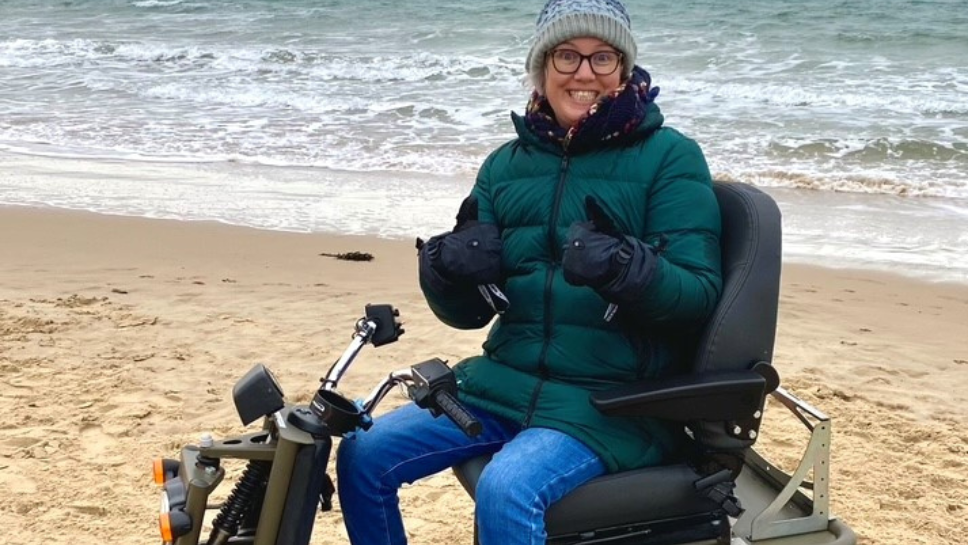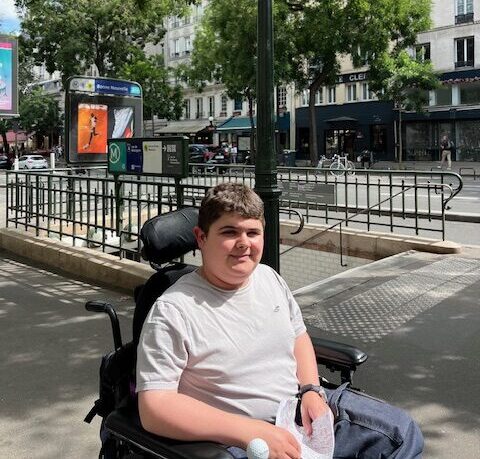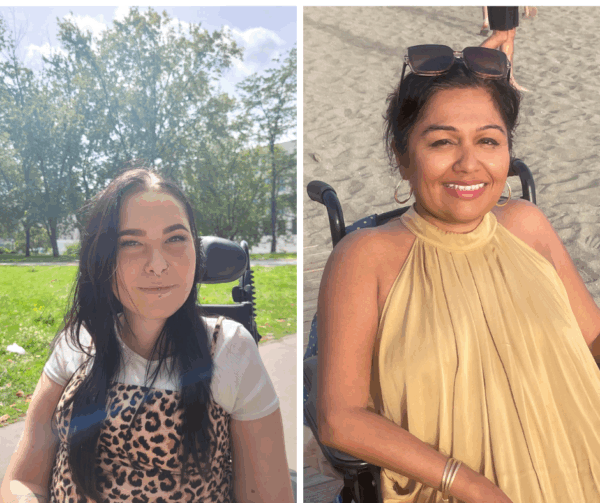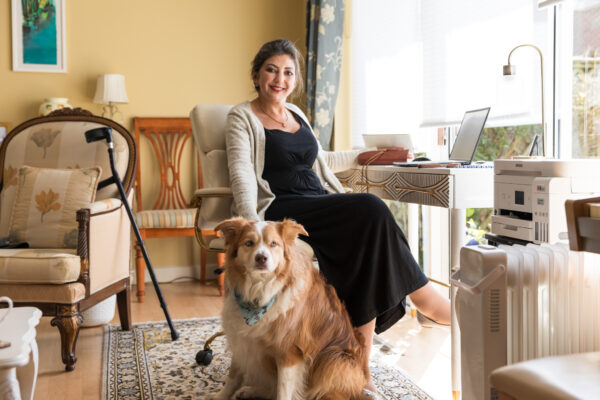This year’s theme for Mental Health Awareness Week is anxiety – one of the most common mental health problems we can face. Louise, a counsellor and psychotherapist, who lives with limb girdle muscular dystrophy, shares her unique perspective on the complex “dance” between physical and mental health to which she, and many of her clients, are trying to learn the moves.
"I wish I could dance on the outside too” – Inclusivity and advice for Mental Health Awareness Week 2023

‘Go running to combat anxiety!’ read the headline of an online article that appeared on my Facebook timeline last week.
“Something went a bit awry with the algorithm there”, I thought to myself, after my initial slightly-less-polite response. Angered and intrigued, I read the article, which outlined the benefits of running to reduce stress. It told me that running “lowers cortisol”, “resets your brain”, “increases endorphins”, and “boosts productivity and body image”.
“Wouldn’t that be nice”, I thought.
Where’s the advice for people like me?
Unfortunately, like so many of us living with muscular dystrophy, running is not an option. Walking is hard enough – and even that is only possible when I do it in my own, somewhat comedic style, resembling a lop-sided-waddling duck.
Although it might seem like a funny mental picture. The reality isn’t funny. Like everyone else, I have my mental, as well as physical, health to look after. I get anxious. But where’s the advice for me?
I know about the wellbeing benefits of physical exercise and nature in reducing stress and I try to get out as often as possible. But for me, it involves planning, layering up, and arranging my mobility equipment. Even then, I’m met with a vague sense of dissatisfaction that my wheels will never, truly replace the sense of fulfillment gained from a good old stomp up a hill!
I wish I could dance on the outside too
The fact is, living with a muscle-wasting condition is hard. Some of us are very limited in what we can do in terms of physical exercise. I enjoy swimming three times a week, and some people might be able to go on a bike ride or take a short walk. But ultimately, for many of us, it’s almost impossible to achieve a real sense of physical exertion, or to experience the joy of tearing up the dance floor.
You might have seen the 2004 film, Inside I’m Dancing, starring James McAvoy who played Rory, a wheelchair-using young man living with Duchenne muscular dystrophy. Whatever you think of the film, it’s hard to deny that the title is inspired. In fact, I’m thinking of having a tattoo with those very words inked on my arm because, for me, they often feel true – I just wish I could dance on the outside too.
While I’m not suggesting that non-disabled people don’t experience anxiety because they have the “miracle tool of exercise” that’s available to them. But for many people, it can be a useful tool that might work to reduce anxiety levels.
Yet for most of us living with muscular dystrophy, this is simply not available to us.
Tips and advice
So, what on earth can we do with this sense of pent-up emotion, which often floods out as anxiety?
Well, there are no easy answers and we’re all different, so what helps one person may not work for another. But there are lots of avenues we might consider until we (hopefully) find one or two things that work for us.
Choose an exercise or activity that you enjoy
The type of physical activity most appropriate for you will vary from person to person. It’s important to choose something that you enjoy, and that is safe, achievable, and that you can fit into your day-to-day life.
MDUK have some useful advice about how to get and stay active.
Talk to your GP
To access help and advice, you can visit your GP to discuss options such as medication, talking to a counsellor or therapist, and other support services. All helpful, important and often necessary options.
Get creative
You might also want to try channeling your anxious energy in a different direction. For example, towards creativity.
Take time to explore art, pottery, crafting, knitting, drawing, poetry, music making, music listening, getting lost in a book, singing, designing, and writing…
Whether you do this in a class or in your own home, getting away from screens and focusing on one of these activities uses the often-neglected right side of the brain, which studies have shown can help reduce anxiety.
Try mindfulness practices
Breathwork, meditation, mindfulness, prayer, practicing sleep hygiene, listening to the dawn chorus from your back door (if you can physically get there), or going for a gong or forest bath has been proven to support good mental health.
Find what works
The trick is finding what works for you, whatever that may be.
The list of options is long, but the message is simple: try things and find techniques that help. Even taking up one small, new practice can make a world of difference to our mental health on a daily basis.
Speak to your support network
Share your thoughts, feelings, and struggles with a trusted friend, family member, or support service. Whilst this will not necessarily take away the anxiety, sharing your problems can certainly help lift a heavy load.
You can call MDUK’s helpline service for information and guidance on things like getting a diagnosis, accessing financial support, and experiencing grief. The team will provide a safe and supportive space to chat and listen. They can also connect you with local, or online support groups, as well as peer-support volunteers, where you can meet people in similar situations in a safe, nurturing facilitated space.
Comfort and company
Misattributed to Alice in Wonderland, the quote, “When you can’t look on the bright side, I will sit with you in the dark” (source unknown) is one that brings me great comfort and inspiration. It’s a practice that I try to live out in both my personal life and in my professional work as a therapist.
Our human drive to “fix things” means that simply being with someone and “sitting with them in the dark” rarely comes naturally to us. This is especially when we want to, but often can’t, take another person’s pain away.
But we should remember that by simply offering our presence to someone, we can share a rare blessing – to help us feel less alone. And, at the end of the day, what better gift can we offer?
We understand that living with a muscle-wasting condition can lead to additional mental health challenges. Having access to the right information and advice can help make a difference.
Our Information, Advocacy and Care Team are here to support you. Call our free helpline on 0800 652 6352 (open 10am – 2pm, Monday to Friday) or email info@musculardystrophyuk.org.


